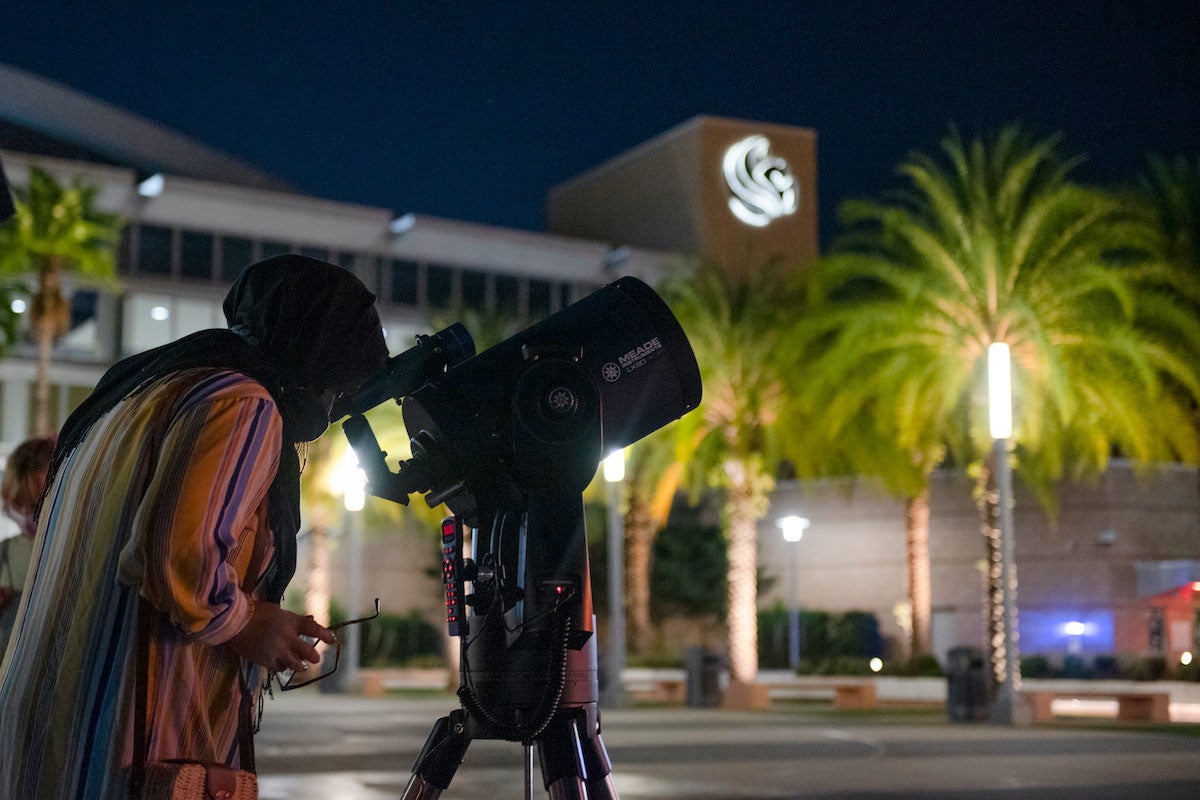Central Floridians will have a chance to see the longest partial lunar eclipse of the century early Friday morning and it promises to put on quite the show.
The best viewing opportunity in Orlando — weather permitting — will be between 3 and 4:30 am. The University of Central Florida will have telescopes out on Memory Mall to help residents get an up-close view.
“Anyone will be able to see the eclipse pretty easily without optical aid, but the telescopes (or binoculars) do give a nicer view,” says Yan Fernandez, a physics and astronomy professor and director of UCF’s Robinson Observatory. “The deepest part of the eclipse is near 4 a.m. so that’s when most of the moon will look orange or red. On either side of that time, more of the moon will look gray/white. (It’s) still pretty dramatic.”
A lunar eclipse is when the moon slips into Earth’s shadow. While this particular eclipse is technically only partial, almost all of the moon will still make it into the deepest part of Earth’s shadow. The moon can look spectacularly reddish or orange when it is that far into the shadow because some red sunlight makes it around Earth (thanks to our atmosphere) to still faintly illuminate the moon. In a way, while in eclipse the moon is seeing the simultaneous effect of all the red sunrises and sunsets on Earth. This partial eclipse lasts for nearly 3 ½ hours, somewhat longer than average, since it happens 1.7 days before the moon reaches apogee — the furthest point from the Earth during its orbit. This means that the moon’s orbital motion will be slower, stretching out the event. Unlike a solar eclipse there is no danger to viewing the event directly.
According to the American Astronomical Society viewers across most of North America will witness the entirety of the event. November’s eclipse favors night owls and early risers, because the full moon passes through the umbra after midnight on November 19th for the four main U.S. time zones, and mid-eclipse occurs in the wee hours of the morning (at 4:03 a.m. EST and 1:03 a.m. PST). For Hawaii and Alaska, the event starts to unfold before midnight.
If you miss this eclipse, don’t worry, there will be two lunar eclipses visible from Central Florida in 2022: one in May and one next November. Both of those will be total lunar eclipses as well.
Anyone planning to attend the Memory Mall should keep an eye on the weather. Check the Robinson Observatory website or its social media channels for updates.




